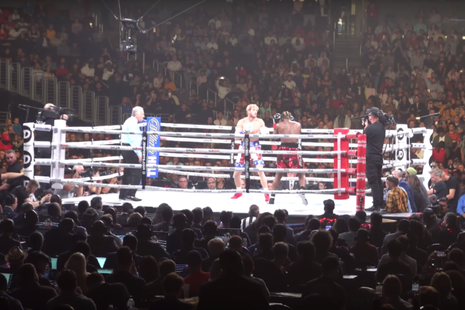
Since the mid-2010s, boxing and social media, especially YouTube, have become increasingly intertwined.James Prime/Wikimedia Commons/https://creativecommons.org/licenses/by-sa/3.0/
The past month or so has been a big one for professional boxing, with the heavyweight bout between Oleksandr Usyk and Tyson Fury and the groundbreaking Queensberry vs Matchroom bout bringing many casual fans back to the sport. Amid this regrowth, many part-time fans have found themselves witnessing a very different sporting world to that of five years ago.
“Boxing has become so saturated on social media that it has lost its meaning.”
Since the mid-2010s, boxing has had an increasingly close relationship with social media, especially YouTube. Like other combat sports, boxing has always promoted public displays of misogyny, dating all the way back to the days of Muhammad Ali, most notably through controversy and exhibitionist disdain, as exemplified by his infamous “What's my name?” challenge to Ernie Terrell. More recently, before the era of YouTube boxing, broadcasters promoted opportunities for deliberate misogyny and name-calling, as seen in the pre-fight hype between Carl Froch and George Groves. These characteristics made boxing the perfect outlet for discontent within its online community, favoring reactive and attention-grabbing rhetoric.
Early iterations of YouTube boxing had some authenticity. Many of my generation will admit, sometimes embarrassingly, that we were enthralled by the novelty of KSI vs. Joe Weller. A 2018 bout between the Olatunji brothers (KSI and Deji) and the Paul brothers (Logan and Jake) managed to retain some legitimacy. But this authenticity has since faded. Social media boxing has become so oversaturated that it has lost all meaning. The staple for “Z-list” celebrities with anything resembling an online following seems to be to put on disastrous fight cards that are poorly organized and totally disappointing.
“It's reassuring to see fight nights always met with such enthusiasm.”
Unfortunately, this same scourge has spilled over into the real world of professional boxing, where mixed martial arts fights like Francis Ngannou vs Anthony Joshua and, even worse, then-champion Tyson Fury have upset the once-sacrosanct status of the heavyweight division. With Usyk at the helm, who doesn't seem too interested in social media debates, the sport may regain its fighting spirit.
Social media has become the primary way the public engages with boxing. Prior to this phenomenon, white-collar events were the vehicle for boxing's growth. At least in Cambridge, this has been sustained through the hugely successful Fight Night events. As a participant myself, I have seen first-hand the anticipation, excitement and joy that these spectacles bring. For fighters, Fight Night provides a unique training opportunity with a view to performing in front of a dressed-up crowd. At the same time, spectators have the opportunity to watch authentic amateur boxing without being immersed in the frenzied enjoyment of social media-driven events.
At the risk of sounding like a pathetic purist, boxing is in a bad place right now. But it's not beyond salvation. The contrast between white-collar events like Fight Night and those featuring minor celebrities couldn't be clearer. If we are to develop the sport sustainably, we must celebrate and publicly applaud the industry behind the grassroots movement. As a Cambridge student, it's reassuring to see Fight Night always greeted with great enthusiasm. The event provides an opportunity for lovers of this noble art to share it with friends, and an environment that provides ample entertainment for those who previously had little or no interest in the sport. While boxing around the world needs some revision, the Cambridge scene retains much of the legitimacy and tradition that has woven boxing firmly into the social fabric of Britain.

